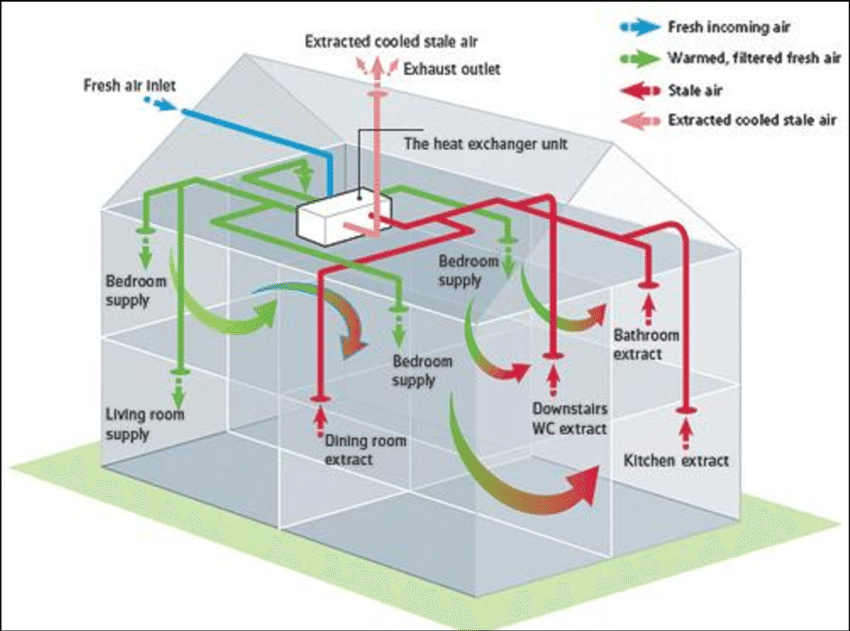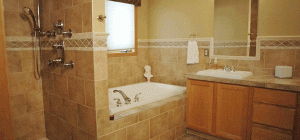 Mechanical ventilation with heat recovery is a relatively new technology, though it is now gaining popularity because of its many energy saving and environmental benefits. Here are the five frequently asked questions people have about Mechanical Ventilation with Heat Recovery or MVHR systems. And most importantly, we’ll answer your questions about MVHR systems in a language everyone can understand.
Mechanical ventilation with heat recovery is a relatively new technology, though it is now gaining popularity because of its many energy saving and environmental benefits. Here are the five frequently asked questions people have about Mechanical Ventilation with Heat Recovery or MVHR systems. And most importantly, we’ll answer your questions about MVHR systems in a language everyone can understand.
When Should I Decide on Including MVHR In My New Home Design?
Frankly, you need to bring this up as early as possible in the design process, since it affects the home’s layout in so many ways. The ideal time to bring it up is right after you’ve received planning permission to build the house. That way, the building’s design can incorporate what’s needed for a successful MVHR installation from the outset.
How Much Energy Does an MVHR System Use?
Most MVHR systems for residential use rely on two small motors to push air through the house. Each of these motors uses about as much power as a light bulb. You can use the MVHR system year-round without having much impact on your electric bill. However, you could override the automatic, continual settings once in a while and save even more energy.
MVHR systems are typically able to remove a lot of air from the kitchen, though some homes may need to have the system combined with a recirculating cooker hood. That, of course, needs electricity. If an MVHR system has an additional inline heater, that will draw power as it heats the supply air, but that’s also a low power draw. Note that no MVHR system is designed to act as a home’s heating system in its own right. You can learn more about the right type of MVHR system for your particular situation at https://www.bpcventilation.com/choosing-a-mvhr-unit.
On the flipside, you don’t have to worry about air quality if the power goes out. You won’t suffocate if the MVHR system doesn’t have power to run for a while. You may notice the bedroom gets a bit stuffy in the morning, but that’s nothing you wouldn’t experience without MVHR. An MVHR system is designed to automatically start up when the power comes back on.
Can Any Home Have MVHR Installed?
MVHR could, in theory, be installed in any building. However, it is only recommended for relatively airtight buildings. If the building has air permeability that is too high, if it lets in too much outside air, then the heat recovery and associated energy saving benefits of Mechanical Ventilation with Heat Recovery are lost.
It can be a challenge to add MVHR after you’ve built a home with a Passivhaus building design or low-energy design. A survey of the property is necessary to determine if MVHR is an option for your current home.
Am I Allowed to Open Windows in a Home with MVHR?
You can open the windows in an MVHR system, but you’ll reduce its efficiency. Since you’re bringing in a large volume of outside air, this generally isn’t necessary. The only exception would be when windows are opened as part of a planned summer purging. Summer purging refers to the practice of opening the windows on a summer night to let cool air in to cool down the interior of the home. During the day, the windows are closed, and the fan speed increased.
Is an MVHR System Helpful for People with Allergies or Asthma?
Yes, noticeable improvements should be experienced by anyone suffering from allergies. Stagnant air that doesn’t get replaced builds-up air particles and contaminants that often cause irritation to someone who’s more sensitive to these things. Because the air is removed and replaced with filtered air from outside, the overall air quality is higher. Given that MVHR systems run automatically without the need for human intervention, the improved air quality is maintained at that level too.
With asthma sufferers, if a window has been left open then it’s possible for the air to have filled with particles that could cause throat irritation when breathed in. The irritation can trigger an asthma attack where the throat begins to close, and the wheezing sound is audible. MVHR works best with the windows closed, so the filtered air ensures asthma sufferer can breathe easier, literally. Great news for people with asthma that find a summer’s day particularly challenging.
MVHR systems are an excellent way to improve indoor air quality while reducing energy needs. They’re not always an option for older buildings or certain home designs, but they are certainly something to consider implementing in your new home design.




![Are You a Secret Hoarder? [Infographic]](https://lerablog.org/wp-content/plugins/wp-thumbie/timthumb.php?src=http://lerablog.org/wp-content/uploads/2014/11/Nation-of-Clutter-IG-v21.png&w=300&h=140&zc=1)


